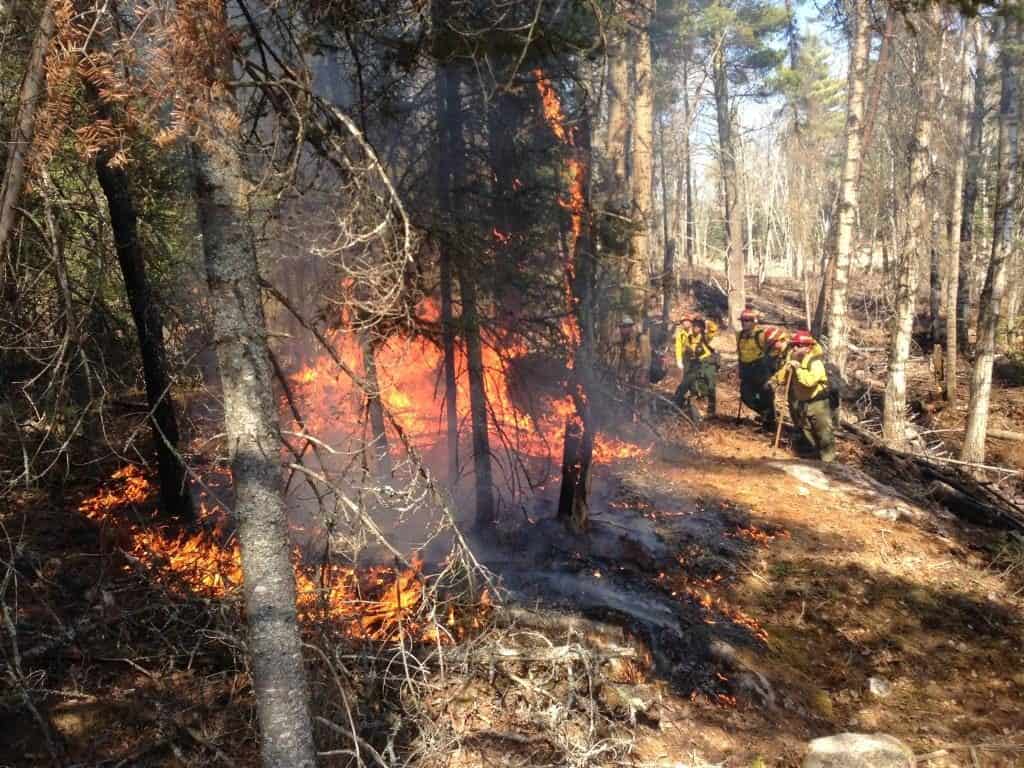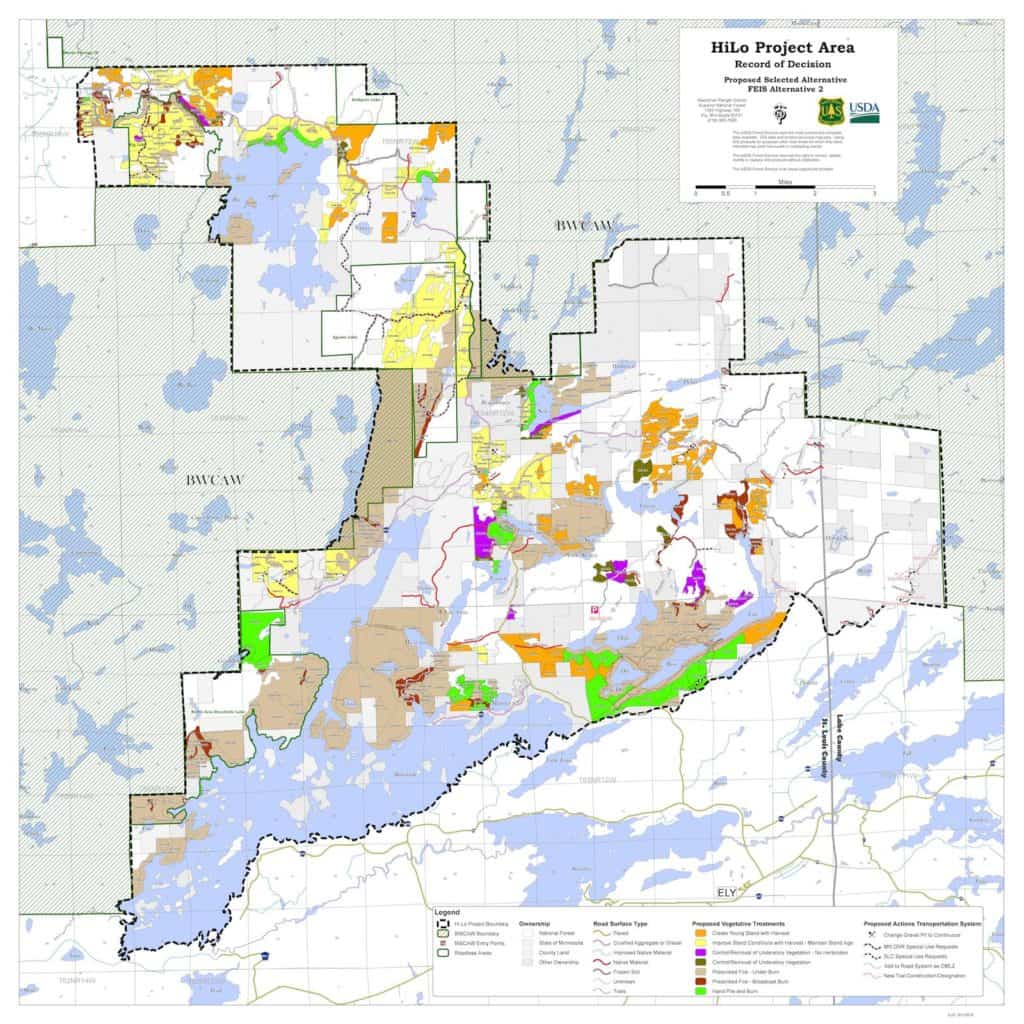
A major forest management project on the Superior National Forest near Ely is almost ready to begin. The HiLo Project will use commercial logging on about 5,500 acres and prescribed burning on about 11,500 acres. Activities will be focused on the north side of Burntside Lake and the Echo Trail corridor.
The goals of the project are manifold. It seeks to improve and restore diverse, productive, healthy, and resilient forest conditions; minimize negative effects of wildfire; provide wood and other forest products; increase and improve both motorized and nonmotorized recreation; and grant access to other land ownerships.
“The project area’s forested ecosystem does not resemble historic forest conditions because of a century of fire suppression and lack of vegetation management to mimic natural disturbances,” the agency’s final decision document states. “A diverse, productive, and healthy ecosystem needs forest stands containing the full distribution of age classes, vegetation composition, structure, and diversity.”

By using timber harvest and managed fire, forest managers also seek to prevent wildfires that start naturally in the Boundary Waters Canoe Area Wilderness from burning outside the wilderness, potentially threatening private property. With a “hardened’ boundary, fires started by lightning in the wilderness could be allowed to burn, performing their natural role in the ecosystem.
Commercial timber harvest on National Forest lands will include both clear-cutting and other logging techniques. Clear-cutting is intended to create young forest, which provides habitat for moose and other key species, and improve the health of other stands.
Boundary Waters Burning
Approximately 1,300 acres will be burned inside the wilderness to reduce the risk of fire spreading outside. The wilderness fire will be focused on an area on the eastern — downwind — side of Slim Lake, providing a broad firebreak for natural fire in the future.
Fire is a natural force in the boreal forest, historically helping maintain the mosaic of tree types and ages. Regular fires can reduce the overall severity of blazes by reducing dead vegetation, but decades of fire suppression have causes such fuels to accumulate. Yet human ignition in the wilderness is controversial.
Some wilderness advocates objected to the HiLo proposal, saying it was unnecessary and violated the Wilderness Act’s prohibitions on human interference in the ecosystem. Missoula-based organization Wilderness Watch wrote that the fire prescribed inside the Boundary Waters will not serve any ecological function, but rather is intended to protect other nearby non-wilderness areas.
Wilderness Watch Conservation Director Kevin Proescholdt, who has been involved with Boundary Waters protection since the 1970s, and has studied the Wilderness Act’s intentions regarding management, says the burning is in conflict with the legislation.
“This rationale for the action likewise does not serve a wilderness purpose; rather, it is focused on a broader goal of fire management and habitat manipulation, primarily outside of the BWCAW,” Proescholdt wrote in the organization’s comments. “The uncontrolled, unmanipulated processes in wilderness create the state of naturalness for that area. This is important because this provides us with a baseline from which to measure our management actions outside of wilderness.”
The Forest Service responded by saying the wilderness fire proposal would have less long-term impact because it will reduce the chances of needing to suppress natural fires in the future. The agency also completed a Forest Plan amendment to guide prescribed fire in the wilderness.
Recreation resources
Some of the management is intended to protect popular recreation sites in the area, while the project will also include developing some new recreation facilities. Its location along the Echo Trail, with Boundary Waters wilderness on both sides, and several popular lakes that host homes and cabins, makes the area prime for public access.
“That area is probably our most attractive recreational part of the district,” Kawishiwi District Ranger Gus Smith told the Timberjay. “The Bass Lake trails, the North Arm, Burntside Lake in general, is all prime recreational area.”
There are also resorts and camps nearby, including YMCA Camp Widjiwagan and Camp du Nord.
New recreation facilities will include an expansion of the Bass Lake trail system, adding one-and-a-half miles of trail connecting to the Low Lake boat landing. Parts of the trail could also be built to allow for mountain biking. Two new hunter-walking trails are also planned, accessed via a trail from a short portage connecting the Cloquet Line Road to Camp lake.
The plan also includes improving the road to High Lake, where the Department of Natural Resources will install a new boat landing on the popular trout fishing lake. It will require a quarter-mile portage to access the lake.
Now that the final Record of Decision has been released, implementation of the HiLo project can start immediately.

